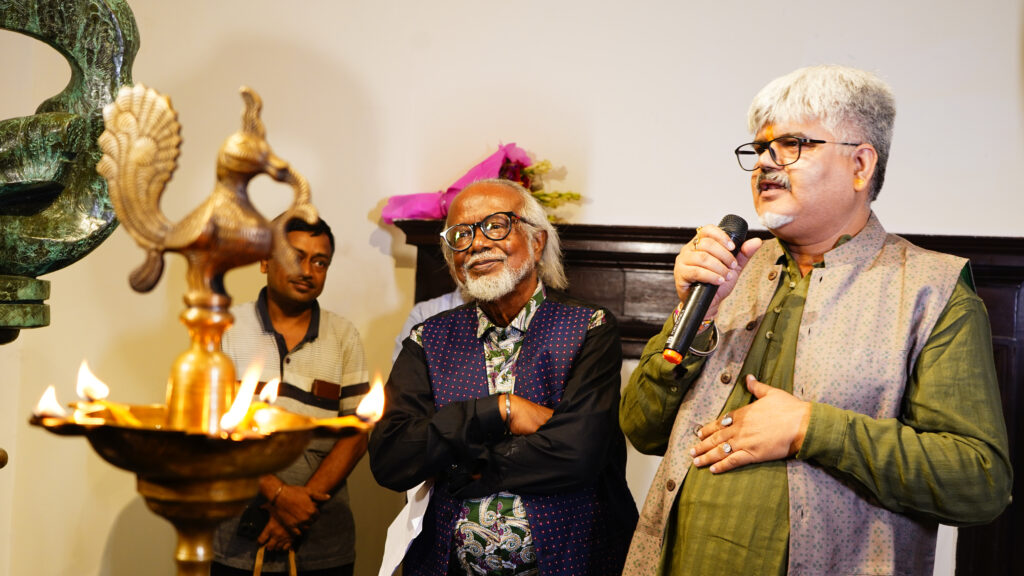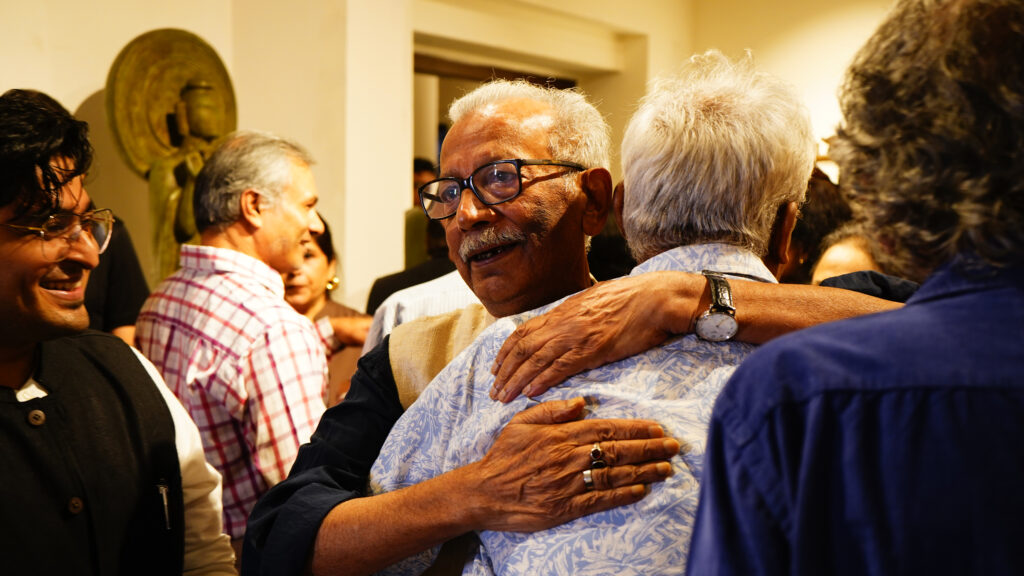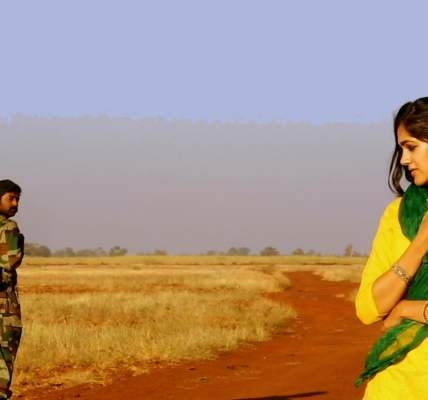Biman Bihari Das – Sculpting mystic melody


Biman Bihari Das is a highly admired senior-most sculptor in the contemporary Indian art scene. Celebrated for his distinctive style and artistic expression, he commands noteworthy popularity among viewers, art enthusiasts, and fellow artists alike. The remarkable turnout at the inauguration of his recent retrospective show at Bikaner House in New Delhi was truly astounding. It was startling to find the overwhelming attendance on the opening day of his sculpture show surpassed all expectations, highlighting the widespread appeal and impact of his work.
Fondly known as Biman Da is widely recognized for skillfully blending tradition with modernity sculpting mystic melody. He is undoubtedly a legend. His work serves as a testament to his strong connection to his Bengali roots while presenting a universally resonant visual expression. Born in 1943 in Tamluk, an ancient town in East Midnapur district, West Bengal. Biman Da grew up in rural Bengal, an environment that naturally influenced his artistic sensibilities from a tender age. After a brief childhood art learning from a local art teacher, he has been a formally trained sculptor as he pursued a Diploma in Modeling and Sculpture at the Government College of Art & Craft, Kolkata, with first-class in 1966. Following his diploma, he was awarded a National Cultural Scholarship (1967-69), enabling him to pursue further research under Prof. Chintamoni Kar, then Principal, Govt. College of Art and Craft, Calcutta. So Biman Da’s academic tenure in Calcutta spanned from 1961 to 1969. Furthermore, he held the distinguished position of Principal at the same esteemed institution from 1994 to 2002.

Since 1970, Delhi has been his residence and professional base. Relocating to Delhi after completing his Fine Art studies in Calcutta, he assumed the position of lecturer in sculpture at the College of Art, New Delhi. Over twenty-five years, he generously shared his expertise with the younger generation before retiring in 1994. Presently, he holds the esteemed position of Chairman at the All India Fine Arts & Crafts Society in New Delhi. He deeply appreciates Delhi, as the city has played a pivotal role in fostering his professional growth and early life achievements, significantly contributing to his artistic accomplishments. Even at 81, he continues to work tirelessly without interruption with the same energy as his youth. Along with his administrative responsibilities, he continued to nurture his artistic journey and achieved several honours, such as the British Council Scholarship under Prof. Jeffrey Smedly, Department of Fine Art, Portsmouth Polytechnic, U.K in 1973-74 where he was specially trained in bronze casting methods, U.G.C Grants under Indo-Hungarian Cultural Exchange Program in Budapest in 1993, and Fulbright fellowship (USA) in 1997. His significant contributions to art brought him titles like Kala Vibhusan from All India Fine Arts and Craft Society (AIFACS), New Delhi, India. He was awarded Padma Shri from the Govt. of India. in 2014 for his contributions to the field of art.

As an artist-writer, my perspective on Biman Da’s work is influenced by the fact that he is a senior alumnus of the Government College of Art and Craft in Calcutta. This institution, as Biman Da notes, is renowned as the birthplace of the Bengal Art Movement and the meeting place of the international cultural figures like Rabindranath Tagore, Jamini Roy, Abanindranath Tagore, and Debiprasad Roychowdhury. The campus of the Calcutta Art College, the sculpture department, and the teacher-student dynamic have always provided a fertile ground for learning. It was within this environment that Biman Da received his training under the tutelage of Prof. Chintamoni Kar, a distinguished British-Indian sculptor. Biman Da’s formative research under Prof. Kar significantly contributed to his artistic developments. In this period he focused on Bengal terracotta, wood and stone temple carving. He also experimented with oriental forms, simplifications and carving techniques.
Later he received an opportunity for further training in England as a British Scholar, while he was teaching in Delhi. This time he focused more on abstract undertaking research on bronze casting methods through the lost wax process. During his stay in England, he had the golden opportunity to meet the celebrated sculptor Henry Moore and other contemporaries, gaining insights into contemporary and modern forms of art and aesthetics. During his Fulbright Fellowship period in the USA, he has been closely associated with American artists Robert Krishbaum, John Anton and others. As he completed his teaching years in Delhi and then served as principal in Calcutta Art college till 2002, he returned to Delhi and continued his work creating many series like Krishna cult, Mithuna, Lord Buddha, Devi, Nayak-Nayika, Philosophy of life, Mother and child, Lord Ganesha and many more themes.
Biman Da’s ongoing retrospective show is his 30th solo exhibition which is presented by the Gallery Art Pilgrim and curated by the writer Sushma Bahl. The collection of his works on display reflects his versatility. There are specific sections like ‘Shakti Spectrum’ ‘Krishna Couture’,’Buddham Sharanam Gachhami’, ‘Nayak & Nayika’, ‘Portraits & People’, ‘Inside out’ and ‘Mode & Material’.






The artist’s creations are not merely products of skill to produce a craft, there is a vision. Biman da’s work embodies the essence of India. His deep inspiration from Indian art and culture is evident in his profound discussions on ancient sculptures and paintings. India’s rich artistic and cultural heritage serves as a wellspring for his work, which he presents in a manner that distinctly reflects the Indian identity. He reveres the aroma of India’s soil and asserts, “For me, it is not ‘Art for art’s sake’… I believe in ‘Art is for people’s sake’. My work is deeply rooted in Indian culture yet holds universal appeal.” He says that most of his works are collected by people outside India as they loved the Indian essence in his work. While he adeptly works with various materials for his sculpting, he is renowned for his bronze masterpieces. His Devi series and Krishna cult have garnered significant popularity and acclaim. Another well-known series is the ‘Nayak’ or ‘Nayika’ series, conveying energy and growth. Despite its modern appearance, these sculptures are connected to expressions found in the earliest examples of Indian art and literature. Many of his life-size sculptures of eminent Indian personalities are installed in India and many other countries which were commissioned by various departments of Govt. of India.





